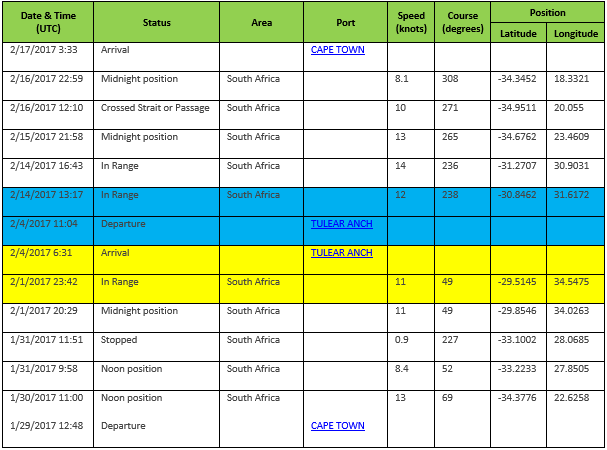|
Connectivity woes continue on the island nation of Madagascar, following the breakdown of an undersea cable that serves as a primary optic fiber network. The Telma Madagascar communications company was first alerted last Wednesday that the underwater EASSy cable that supports Internet access to the island nation was out of service. The damage, according to a company release, occurred at a depth of 2,600 meters and about 38 kilometers offshore from the southwest coastal city of Toliara. Figure 1 - EASSy Cable Map Source: EASSy Consortium The company is working around the clock to complete repairs, the release said, but they are being done in stages and required equipment to be shipped from Cape Town, South Africa. The arrival of those parts on their 3,000-kilometer journey was not expected before Friday, and complete cable repairs will take an estimated total of 15 days. In the meantime, service to 3 million clients is compromised and the company is making business customers, schools and their websites a priority during work hours in an effort to mitigate the impacts on the economy of Madagascar. Other Telma clients have been encouraged to use communication alternatives, which the company acknowledges is an inconvenience until the complex repair process is complete. The EASSy cable – short for Eastern Africa Submarine Cable System – is a 10,000 kilometer cable that runs the length of the continent’s east coast. It’s the highest capacity line serving sub-Saharan Africa, and in addition to the Madagascar site, coastal connection points also are located in Mozambique, Tanzania, Kenya, Somalia, and Djibouti, as well as on Comoros. Those points serve a network that reaches as far inland as Khartoum in Sudan or Kigali in Rwanda, among other cities. Source : Africa Times ANALYSIS: Madagascar's connectivity to the rest of the World is vulnerable at the moment although two new cables, Africa-1 and IOX, are proposed. Africa-1 is a consortium consisting of PCCW, Saudi Telecom, MTN Group, Telecom Egypt, and Telkom South Africa which announced their intention in April 2016 to build a cable connecting East Africa to Egypt via the Red Sea and to India, Pakistan, and the United Arab Emirates. RFS for this system is supposed to be 4Q 2018 but there has been no evidence of the consortium making progress since the original announcement. IOX is an entrepreneurial private cable being driven by a former SEACOM employee and focused on improving connectivity for Mauritius and Rodrigues. However, the cable is also planned to have branch into Toliary, Madagascar with the southern end of the trunk connecting to a branching unit on the existing SEACOM cable. IOX Cable Ltd. claims to have partnerships in place with Mauritius Telecom and SEACOM and is planning to be in service by the middle of 2019. However, the challenges of funding and of interconnecting with an existing live system may prove to be too much. It would therefore appear that Madagascar has only a slim chance of gaining additional submarine fiber optic redundancy in the foreseeable future except that the island nation already has another route via the LION-1 cable, owned by Orange, Mauritius Telecom, and Orange Madagascar, to the island of Réunion which is also a landing point for the SAFE consortium cable carrying traffic between Malaysia, India, and South Africa. SAFE is a fifteen-year-old 2.5 Gbit/s wavelength system which has been upgraded to carry 10 Gbit/s wavelengths. Currently, the system has around 220 Gbit/s lit out of a total design capacity of 440 Gbit/s, indicating that SAFE should have enough capacity to restore traffic to Madagascar via LION-1 which is designed to carry up to 1.28 Tbit/s. Why this is not a restoration option for Telma is probably due to competition between the incumbent and Orange in the mobile market. While this is understandable, it is surprising how often outages in less developed countries cause disruption because sensible mutual restoration arrangements have not been put in place. Figure 2 - Itinerary of Léon Thévenin during EASSy Repair Source: MarineTraffic.com
The CS Léon Thévenin was mobilized out of Cape Town for this repair on January 29, 2017. She spent 19 days to traverse to the fault location, effect the repair, and return to port. Figure 2 above shows the itinerary of the vessel during this time but it is not possible to pin point the location of the fault because she stopped transmitting position updates for 54 hours (highlighted in Figure 2 above) between leaving South African waters and entering deep water beyond the continental shelf, and arriving at anchorage outside Toliary, Madagascar (Tulear). Having left Toliary on February 4, the Léon Thévenin again stopped transmitting her position for 10 days (highlighted in Figure 2 above). This, presumably, is when the repair was made somewhere between 23°21.306" S, 43°37.3968" W, and 30°50.772" S, 31°37.032" W.
0 Comments
Leave a Reply. |
Julian Rawle, AuthorThought leadership articles and commentary on developments related to the subsea fibre optic cable industry can be found here. Archives
February 2018
Categories |





 RSS Feed
RSS Feed